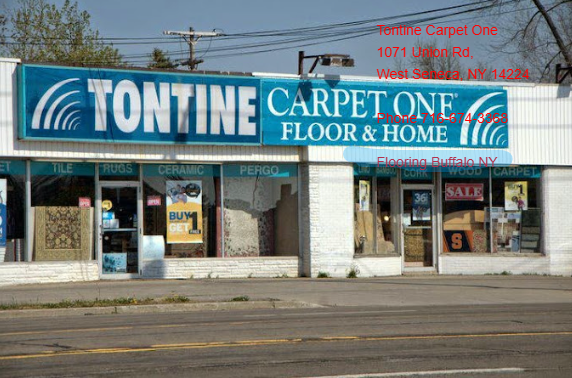Introduction
When we stroll by means of a fantastically embellished abode, our eyes ordinarilly fall upon the carpeting that serves as the two a foundation and a announcement piece. Carpets can increase spaces, supplying heat, alleviation, and an aesthetic enchantment. But have you ever ever questioned how carpet styles developed through the years? From high priced Persian rugs to modern minimalist designs, the adventure of carpeting kinds displays societal differences, technological improvements, https://postheaven.net/brimurgawx/the-evolution-of-carpeting-styles-over-the-years and evolving tastes.
In this text, we’ll explore The Evolution of Carpeting Styles Over the Years in detail. We'll delve into historical context, substances used, layout tendencies, and contemporary inventions inside the carpet enterprise. Whether you might be purchasing for carpets Buffalo NY, Hardwood Flooring Buffalo NY, or genuinely exploring possibilities at your regional Buffalo Carpet Store, this text will provide insights into how carpets have modified through the years.
The Evolution of Carpeting Styles Over the Years
A Brief History of Carpeting
Carpeting has a prosperous background courting lower back 1000's of years. Initially created for real looking reasons, carpets evolved into decorative art types that pondered cultural values and options.
Early Beginnings: The Origin of Rugs
- Persian Influence: Persian rugs are among the oldest universal carpets, dating to come back to round 500 BC. Their problematic designs broadly speaking feature floral motifs and geometric styles. Navajo Weaving: In North America, Native American tribes just like the Navajo all started weaving their possess exact rugs as early because the 17th century.
These early carpets had been not most effective sensible but also served as status symbols within their respective cultures.
The Middle Ages: A Shift in Functionality
As societies evolved all over the Middle Ages, carpets transitioned from being purely utilitarian to serving as decorative ingredients in castles and church buildings across Europe. The use of rich colors and tricky designs have become outstanding.
Renaissance to Industrial Revolution: The Rise of Luxury Carpets
Renaissance Flourishes
During the Renaissance period (14th to 17th centuries), European royalty commissioned first rate tapestries and carpets for his or her properties. These textiles featured bright shades and depicted scenes from mythology or nature.
Industrial Innovations
The Industrial Revolution in the 18th century marked a gigantic turning level for carpeting styles:
- Mass Production: With improvements in equipment, carpets will be produced on a bigger scale. Synthetic Fibers: The creation of manufactured fibers sold sturdiness at cut costs.
20th Century: Diverse Styles Emerge
As we entered the 20 th century, carpeting began to diversify in addition:
Mid-Century Modern Designs
The mid-century contemporary move emphasized simplicity and functionality. Carpets including shag rugs become preferred through their textural traits.
Post-War Era Trends
After World War II, there has been a surge in suburban residing which encouraged carpet layout:
- Wall-to-wall carpeting have become a staple in lots of residences. Bright colours like avocado efficient and mustard yellow mirrored customary lifestyle right through this period.
Contemporary Trends: Sustainable Practices and Technology
Today’s carpets mirror contemporary approach to life alternatives with an emphasis on sustainability and know-how:
Eco-Friendly Materials
Many patrons at the moment are attempting sustainable treatments made out of recycled fabrics or organic fibers. This shift is clear at native flooring retailers like Tontine Carpet One Buffalo NY.

Technological Advancements
Innovations reminiscent of stain-resistant treatment plans and advanced installing procedures have made conserving carpets less complicated than ever until now.
Materials Used in Carpet Making Through Time
Natural vs Synthetic Fibers: A Comparative Analysis
When discussing carpet resources over time, it’s imperative to examine the two healthy and artificial fibers:
| Material Type | Characteristics | Advantages | Disadvantages | |-------------------|-----------------------------------------------------|-----------------------------------------|-------------------------------------| | Natural Fibers | Wool, cotton, jute | Eco-friendly; luxury think | Can be expensive | | Synthetic Fibers | Nylon, polyester | Durable; stain-resistant | Less breathable |
Wool: The Classic Choice
Wool has been respected for its longevity and costly texture throughout records. It retains warm temperature neatly and is clearly resistant to dirt.
Nylon: A Modern Marvel
Introduced inside the mid-20th century, nylon straight away turned into well known by using its resilience against put on and tear—terrific for prime-visitors places like hallways or living rooms.
Design Trends Across Different Eras
Victorian Patterns: Opulence Redefined
In Victorian times (19th century), ornate styles ruled carpet designs with floral motifs reflecting wealth.
Art Deco Inspirations
Art Deco (Nineteen Twenties) introduced geometric shapes into concentrate—presenting formidable contrasts that also resonate as we speak.
Influence of Culture on Carpet Design
Cultural Significance
Every way of life has its detailed contribution to carpet making—from Persian motifs celebrating nature to Navajo patterns reflecting storytelling.
Regional Styles
Each neighborhood showcases specified qualities structured on conceivable fabrics or conventional ideas—consider Turkish kilims versus Indian dhurries!
FAQs
1. What are a few in style different types of carpeting?
There are varied varieties which include loop pile, lower pile (like plush), frieze (twisted), Berber (looped & textured). Each gives specific aesthetics & relief degrees!
2. How do I settle on a carpet structured on everyday life?
Consider components together with foot traffic tiers! For busy families with pets/kids go with durable options like nylon or Berber patterns that withstand stains!
3. Are green carpets price it?
Absolutely! They no longer only contribute towards sustainability yet also can supply more effective air first-rate advantages! Many green manufacturers now have based choices too!
four. How pretty much should still I substitute my carpet?
Typically each 5-10 years relying on utilization & upkeep! Regular cleaning can lengthen its existence considerably!

five. What’s trending top now in carpeting styles?
Current trends emphasize textures—believe shaggy appears to be like paired with impartial colorations! Also multi-purposeful house rugs are somewhat well known!
6. Can I installation carpet myself?
While DIY install is it is easy to specifically with modular tiles; pro installation guarantees perfect outcome above all for wall-to-wall fittings!
Conclusion
As we replicate on The Evolution of Carpeting Styles Over the Years, that is clean that these humble textiles tell experiences some distance past aesthetics—they encapsulate cultural identities while adapting with time's currents! Whether you’re traveling your native Buffalo Carpet Store or identifying between techniques at Tontine Carpet One Buffalo NY; information this evolution enhances appreciation to your preferences at the present time!
From ordinary fibers steeped in subculture to state-of-the-art synthetic techniques; our reference to ground is still profound! So next time you stroll throughout your plush residing room carpet recollect—it’s greater than simply fabrics underfoot—it’s heritage woven into each thread!
